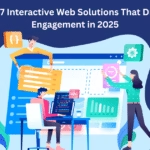A detailed look at the cost of web development in India
Are you planning to create a website? If so, you must be curious about the cost of website development in India. Although almost every business today knows the importance of having a great website, many small businesses shy away from it considering the added cost. If you are in the same boat, you should know that there is no alternative to a good website.
A properly designed and used website can be one of the most effective marketing channels for a business. So, the question is no longer whether you need a website, but how much it will cost you.
What determines the cost of web development in India?
When talking about the cost of web development in India, you need to remember that there is no fixed price for web development in India. Fees can vary depending on several different factors such as developer or development company rates, the scope of work, the technology used, the amount of time to invest, and many more. Here we will discuss the main factors that influence or determine the cost of web development.
Scope and size of the project
One of the most important factors that determine the cost of web development in India is the scope and size of your project. To give you a basic idea, let’s categorize the scope of the project by the number of pages the website has. Here’s a quick look:
A basic website of 1 to 10 pages
You may have come across such sites while browsing the web. Startups and new businesses often use these simple websites for their main business or projects. These websites usually do not require any custom or complex programming or customization. In addition, since the total number of pages does not exceed 10, the total work is significantly reduced. In most cases, these websites are created in such a way that they can be expanded with new content, sections, and services in the future.
A website for small businesses with 10 to 20 pages
This type of website is often the result of an expansion or development of the first category of the website. When the base site undergoes a redesign or expansion, the developer can simply add to the number of pages to include the new services, and the total number of pages will never exceed 20. This type of site does not require design customizations, and even if they do, they tend to be simple.
A website for medium-sized companies with 20 to 40 pages
This type of website is ideal for companies that do business online. If you are interested in eCommerce website development costs in India, this section is for you. Let’s say you don’t necessarily need to have a complete online store built. However, if a large part of your sales process starts on your website, you will need this type of website.
For example, you can use the relatively large capacity of a website to offer a comprehensive web catalog of all the different products or services you offer. Building such a site of this size and complexity will certainly cost more than the above categories. You may even need a web development company to offer additional support in the form of website updates and keeping up with regular maintenance.
A large website of 40 to 50 pages
Now we are talking about big and heavy websites with around 50 pages. Such websites are mostly made for companies with significantly high requirements and web activity. If your main sales channel is your website, you’ll need to invest in a robust one that can handle this type of load. Creating such websites requires the most work, skills, and abilities. Therefore, it will probably cost the most of all the other projects mentioned here.
SEO and database integration
Nowadays, SEO and web development go hand in hand. You can create a beautiful, featurerich website, but if you don’t optimize it for search engines, your website will simply get lost in the crowd. You need to invest in SEO to make sure your website appears in the top search results of Google, Yahoo, and Bing. Fortunately, almost every web development company in India offers SEO as an add-on or value-added service. In most cases, SEO services include keyword research, on-page and offpage optimization, content creation, link building, and website analytics tracking. When considering the cost of website development in India, you need to factor in the added cost of SEO as most providers will charge extra for this.
The same goes for database integration. A database is an integral and critical part of your website. It determines where your data is stored and how well the website runs. Database integration requires special skills and technical knowledge. Hiring a database expert for database development and integration will inevitably increase development costs.
Comprehensive features and other integrations
If you want your website to have complex features like a forum, registration system, or a detailed calendar, a web development company may charge you more. The features you want to add will also affect the kind of tools you need to use. The need for a whole range of web development tools will also increase the fees.
Additionally, development costs will increase if your website requires ERP, CRM, eCommerce, or any other third-party system integration. However, the cost of integration usually varies depending on how the different systems you want to connect are supposed to interact with each other. If it’s something as simple as installing a pre-made connector, it will cost less. However, for something as complex as building a connection from scratch, the fees can be high.
These are some of the basic factors that usually affect the cost of web development in India. If you want to create a stunning feature-rich website within a budget, the best idea would be to choose a custom web development package like those offered by Tihalt Technologies, one of the leading web development companies in India. Unlike pre-set packages, a custom development package allows you to pay only for the services you need. To learn more about web development fees and packages, contact Tihalt Technologies today!















